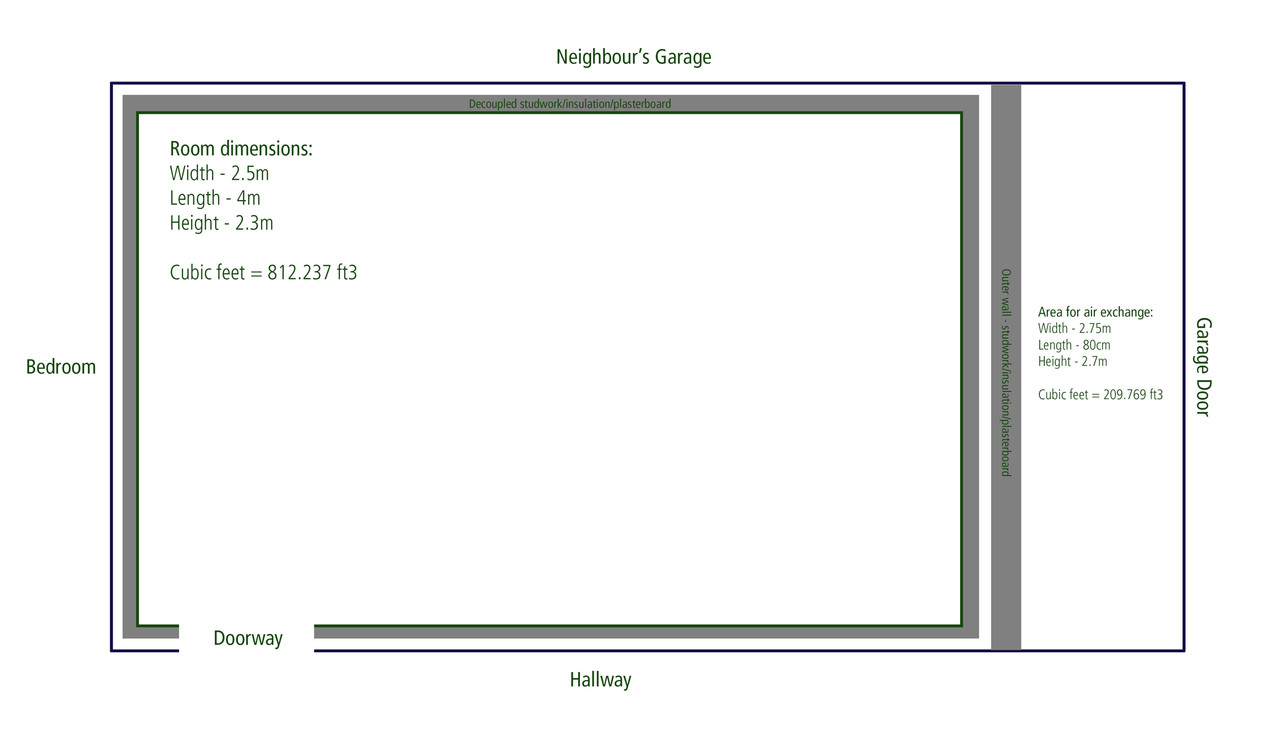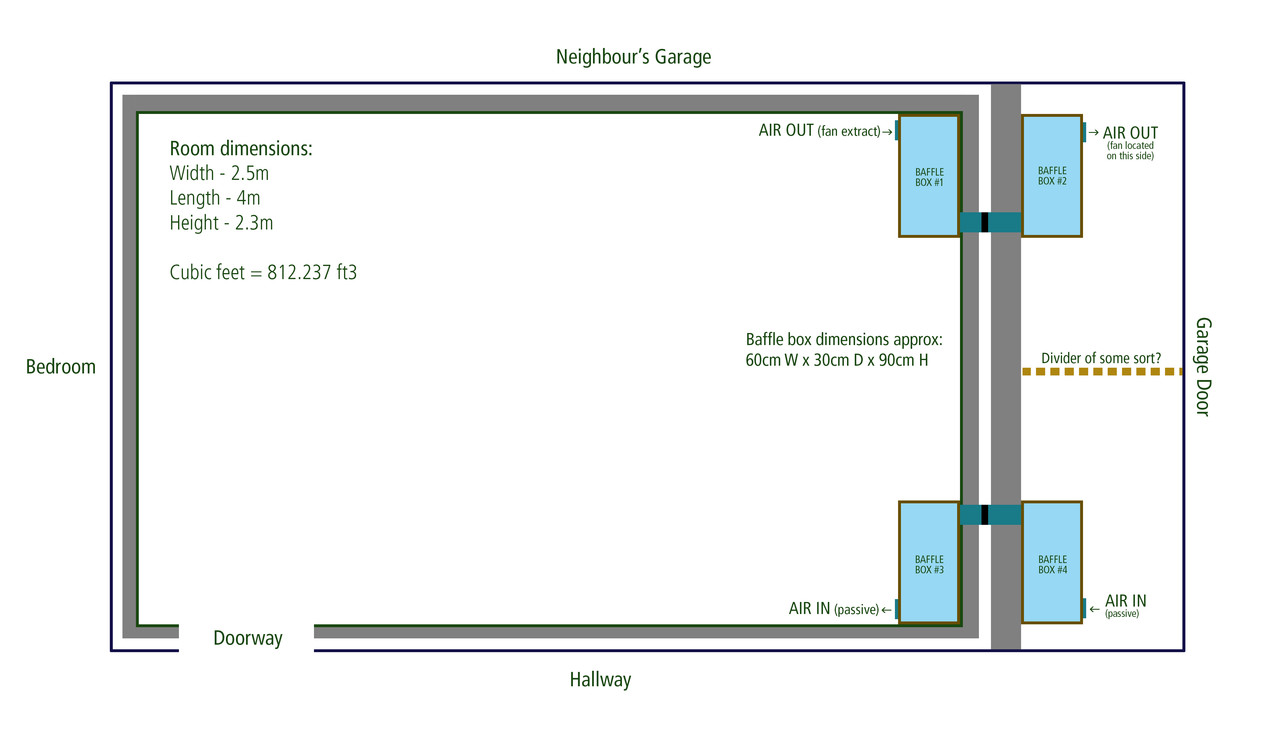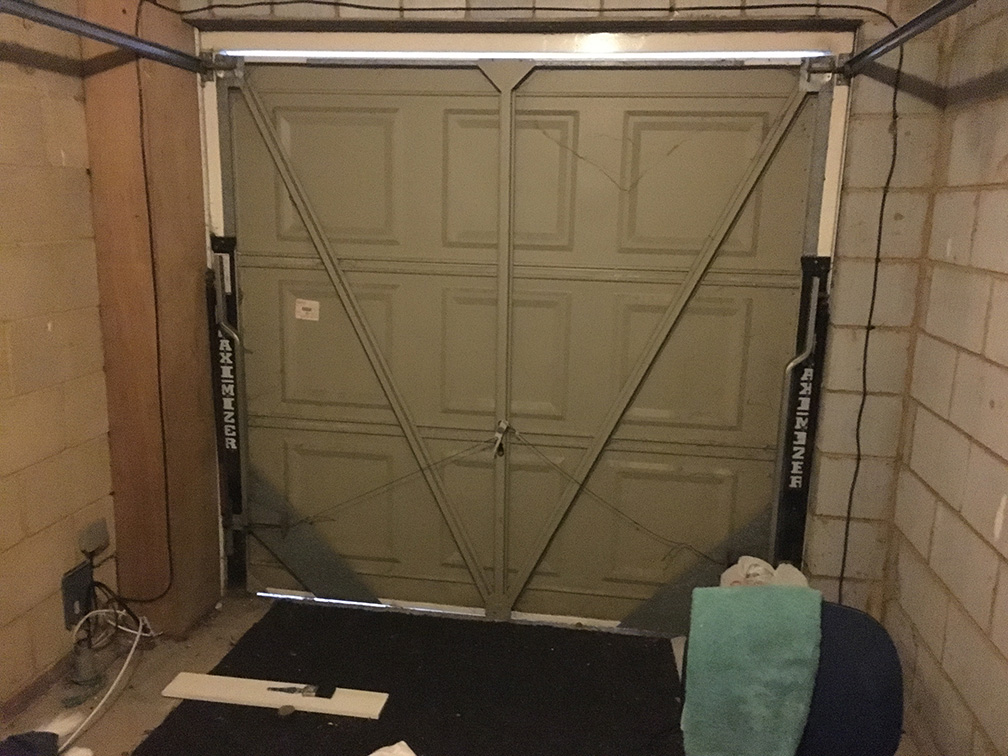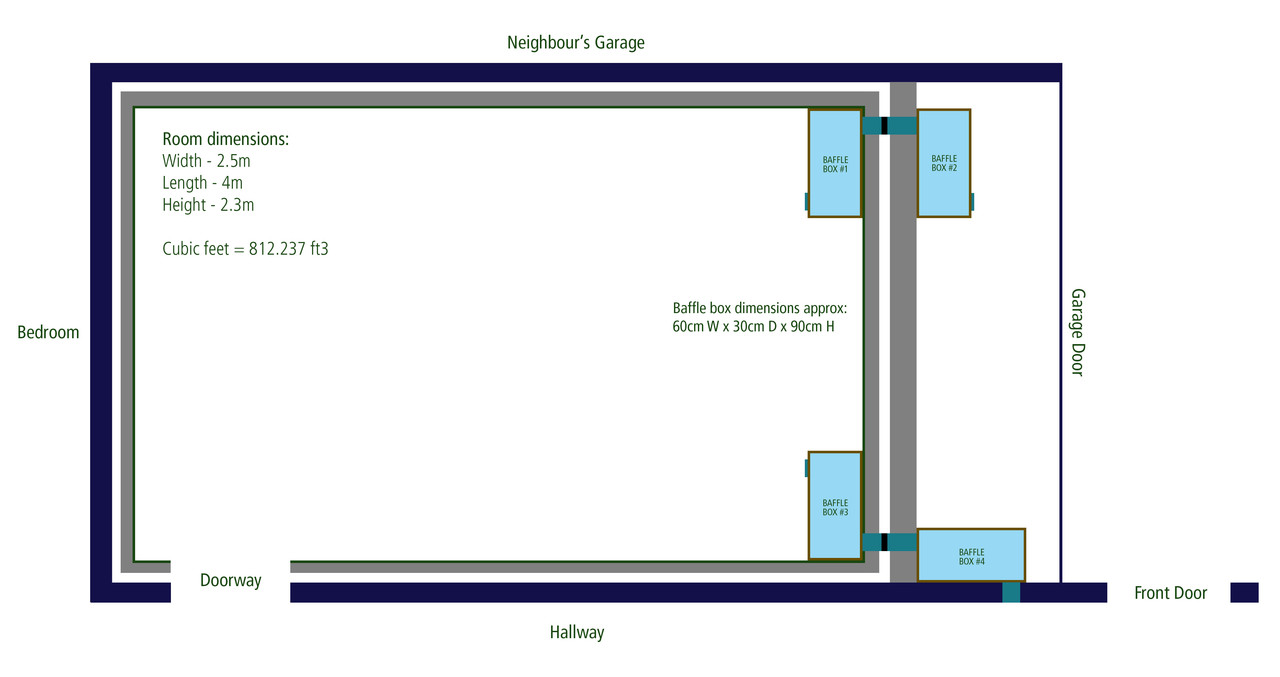Why is X given as Y minus 7? Where is the 7 coming from?
I made the diagram so people don't have to waste time figuring out every detail like where the 7 is coming from

I'm still not entirely sure how i work out what Y
Y is determined by how much room you have in the location where the box would be. For example, say I needed this box to live between some joists that have a 14" space between them. Well, Let's say I want to keep 1" on either side of the box, so that means my box can be 12" wide. That means Y = 12. Now that you know this variable, you can use the formula in the diagram to determine the value of X.
so 'Z' would be how high it is?
Yes. Since my diagram is only 2D, the 3rd dimension could be called Z if you want.
Knowing your necessary cross sectional area within the box (at least double that of the inlet sleeve) and knowing what your maximum X value is, you can easily calculate Z.
Z = desired cross sectional area / X
Remember, Z will be your interior height. So, if you have 1" of duct liner and 1" of MDF, that means 2" extra on the top and 2" extra on the bottom. So, Z + 4" + whatever gap you want to have between the exterior of the box and whatever else is around it.
As you can see, these boxes end up eating up a LOT of space. Especially if you need 4 of them!
again I come back to the question of how I know what the cross sectional area needs to be?
Figure out how much CFM you need (I recommend 6 to 8 air changes per hour)
If this is just for ventilation (dumping stale air outside and bringing fresh air in), you need 25-30% of the total CFM.
Knowing the required CFM, you can use something simple like this chart to determine the duct size you need:
Duct Sizing.png
Once you know your duct size, you can figure out the duct's cross sectional area using the formulas I posted last time.
Double or triple or better yet, quadruple the duct's cross sectional area to determine the cross sectional area inside your silencer box.
At the outlet/register/grille of your duct work, you have to make sure the air velocity is >= 300 ft/min so increase your duct size before the outlet. I believe I included the forumula for that stuff in my last post as well.
and the boxes will be on the outer leaf of the wall.
If you are only going to have outer leaf silencers, you need these to be massive. Basically, make them twice the size as a regular one would be. You also need the sleeve penetrate through both leaves (with a small gap filled with caulk) as to maintain the surface density of your sheathing.
That said, I don't want MASSIVE boxes protruding into the room, so there is a limit.
You won't have any boxes in your room if you only have them on your outer leaf. If you do want great isolation, you will need 4 boxes (2 inner leaf silencers in your room or between your leaves and 2 outer leaf silencers outside of your outer leaf or between your leaves). Depending on the size of your room though, these boxes will be large. And remember, the bigger they are, the better they work.
Another aspect I am not entirely clear on is what I connect to the holes in the box... would this be metal ducting which then sits inside a hole I obviously have to cut in my wall? I have seen mention of 'sleeves' but I'm not sure what this is exactly?
Depending on your design, either you will connect more duct work, or else it would have a grille/diffusor on the sleeve, or heck, you could just leave the sleeve with nothing on it.
The following picture is of a silencer box for an inner leaf that lives between the leaves. So, at one end of the box it's just a round duct inlet that flex duct connected to. The other end of the box has a sleeve on it (just a square made of 1" MDF) that penetrates through the outer leaf sheathing. The sleeve has some duct work on it because it had a fan attached to it. This allows us to penetrate through the sheathing without compromising the surface density of the system.
Big Silencer Done.jpeg
Here is a different box. It is an inner leaf box that has one big sleeve on it (sized for <300 ft/min air velocity).
Nook Ceiling.JPG
In the final picture, you'll see that the builder just put a cheap grille from Home Depot over the end of the sleeve.
Current Nook.jpg
I'm aware that if my box is on the outer leaf, I don't want it bridging or in direct physical contact with the inner leaf at all, yet at the same time a portion of this box will be residing within my inner leaf as air obviously needs to get in/out.
Youll need to leave a 1/4"-1/2" gap around the sleeve and REALLY fill it up with caulk. This will maintain the seal, surface density (as caulk has pretty much twice as much surface density as drywall), and it will decouple the sleeve from the sheathing.
Greg



